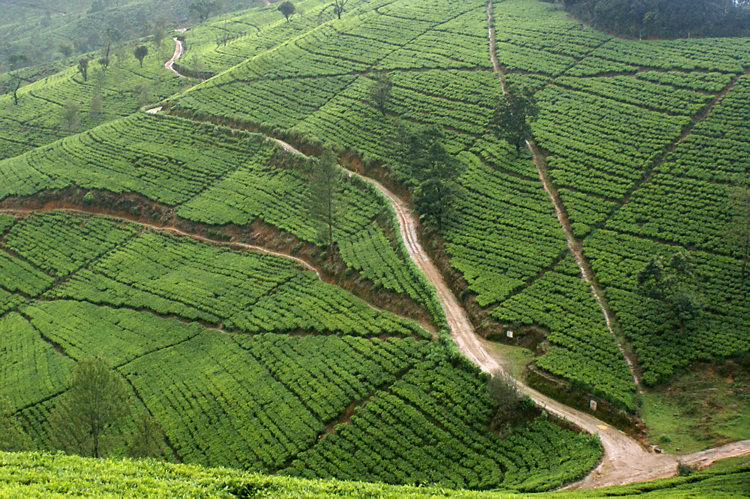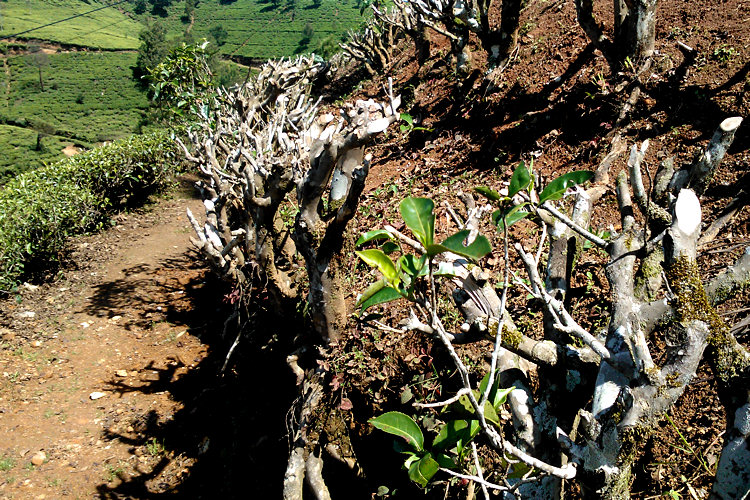Ceylon Tea Plantations in Sri Lanka
As you walk through the tea plantations you will see bushes lining the edge of the tea fields along the roads. These are lemon grass as in the photograph below or acacia bushes. Not the big acacia trees that you see in Africa. These compact bushes are planted to stop the road dust and dirt going on to the tea plants.

Ceylon Tea Plantations lemon grass lined tea fields in Sri Lanka
The only other thing that you see near the tea plantations are the brightly coloured canna plants. These are used to capture rain water and send it back into the ground in dry areas. The rain bounces off their broad leaves and drips onto the parched earth. They also look very pretty.
Some of the problems that the tea planters have to deal with at the high altitude of the Sri Lankan Highlands around Nuwara Eliya is frost burning. If it gets too cold the young buds shrivel. There is also the problem of tea blight. This can only be cured by heavy pruning and burning of infected leaves.

Row upon row of tea fields in the Sri Lanka highland mountain region of Nuwara Eliya
Some estates use sprays to get rid of the blight but they cannot then recommence picking for 10 days. Spraying is also ineffectual during the monsoon season as the rain just washes it away before it can get to work on the blight.
Some of the Ceylon tea plantations estates in Sri Lanka have very steep slopes and are planted on the diagonal to try and prevent soil erosion which contrasts to the lower slopes bushes planted in regimental horizontal lines. Traditionally it is the women that pick the tea as they a have small nimble fingers ideally suited to picking the tea buds. The men are used for pruning, weeding and more manual jobs on the estate.
New plants are not grown from seed. Cuttings are taken and propagated. This speeds up the process. The first crop of new leaf tips can be taken at three years. The plants are pruned every five years until the plant reaches the age of eighty five. The plant is dug up. Lemon grass is then planted instead. After a year it is dug into the soil. This helps put the nutrients back into the ground before a new young tea bush is replanted.

Pruned ceylon tea bushes in Sri Lanka plantations
Travel books

